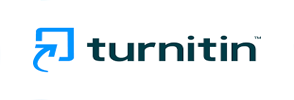Forecasting Future Cash Flows Using Income Statement Components in Indonesia’s Food and Beverage Sector
Abstract
This study aims to examine whether gross profit, operating profit, and net profit influence the prediction of future cash flows in food and beverage companies listed on the Indonesia Stock Exchange (IDX) during the 2017-2021 period. The research employs secondary data obtained from the official website of the Indonesia Stock Exchange. The sampling method used is purposive sampling. Out of 72 food and beverage companies listed on the IDX during the study period, 19 companies met the specified criteria. The data were analyzed using multiple linear regression with the fixed effect model, processed using the eviews 12 application. The findings indicate that, partially, gross profit has a negative and significant effect on future cash flow prediction. Operating profit does not have a significant effect. Meanwhile, net profit has a positive and significant effect on the prediction of future cash flows. Simultaneously, gross profit, operating profit, and net profit have a significant joint influence on future cash flows. Different from previous research, this study combines gross profit, operating profit, and net profit variables with the most recent period. The findings provide insights for management and investors in evaluating profit components for forecasting future cash flows.
Abstrak - Penelitian ini bertujuan untuk menguji apakah laba kotor, laba operasi, dan laba bersih berpengaruh dalam memprediksi arus kas di masa mendatang pada perusahaan makanan dan minuman yang terdaftar di Bursa Efek Indonesia (BEI) selama periode 2017-2021. Penelitian ini menggunakan data sekunder yang diperoleh dari situs resmi Bursa Efek Indonesia. Metode pengambilan sampel yang digunakan adalah purposive sampling. Dari 72 perusahaan makanan dan minuman yang terdaftar di BEI selama periode penelitian, terdapat 19 perusahaan yang memenuhi kriteria yang telah ditetapkan. Analisis data dilakukan dengan regresi linear berganda menggunakan pendekatan fixed effect model (FEM) melalui aplikasi eviews 12. Hasil penelitian menunjukkan bahwa secara parsial, laba kotor berpengaruh negatif dan signifikan terhadap arus kas di masa mendatang. Laba operasi tidak berpengaruh signifikan, sementara laba bersih berpengaruh positif dan signifikan dalam memprediksi arus kas di masa mendatang. Secara simultan, laba kotor, laba operasi, dan laba bersih berpengaruh signifikan terhadap arus kas masa depan. Berbeda dengan penelitian sebelumnya, penelitian ini menggabungkan variabel laba kotor, laba operasi dan laba bersih dengan periode terbaru. Temuan ini memberikan wawasan bagi manajemen dan investor dalam mengevaluasi komponen laba untuk memproyeksikan arus kas di masa mendatang.













